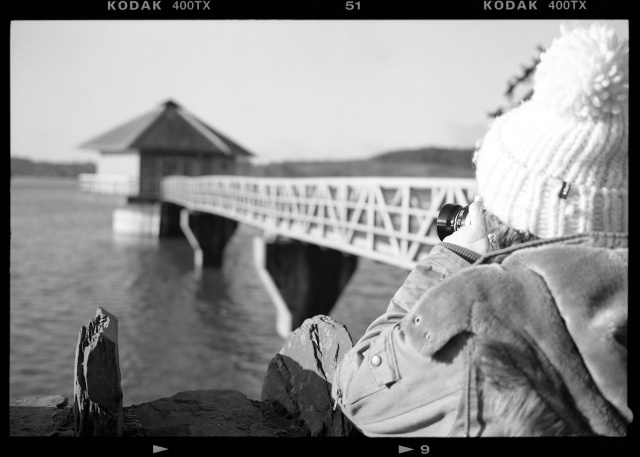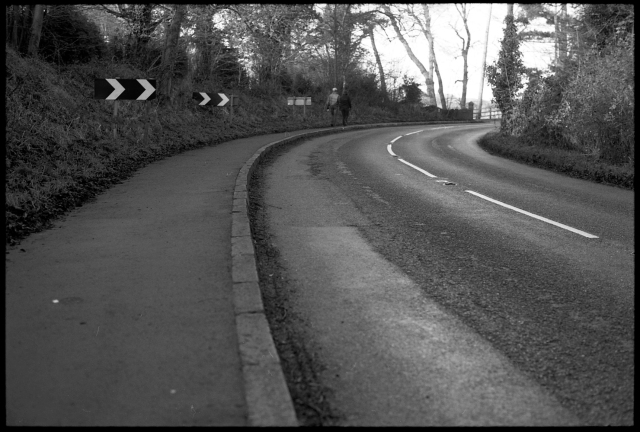In the course of writing this blog, I’ve often found it frustrating that I can’t post pictures that are subject to copyright here. The course notes tell us not to, even though, when I do link to the picture elsewhere, it often hasn’t been credited properly.
Anyway, the first part of this exercise asked us to mark up a couple of photographs, showing the implied lines within. I did it, but as I can’t post the pictures, you’ll have to take my word for it…
The next step was to find any three photographs of our own, and perform the same analysis.
First up is a picture I took of my daughter on the 2012 Worldwide Photowalk (I actually won the Leicester prize for this picture). She’s kicking a pile of leaves that had formed in the city’s Castle Square. There are several implied lines to my eye. Her general movement is forwards and that is shown by the angle of her body, leaning forwards and her front foot being so far in front of her. The second line is that of her foot as it follows-through after kicking the leaves, moving upwards in an arc. The leaves are heading in all directions!
The second picture shows my other daughter on Croyde beach, throwing sand. The arc of the thrown sand and her body shape, both provide implied movement in the same direction. There is also an eye line (although we can’t see her eyes) as she looks up at the send.
Finally, another picture from the National Cyclocross Championships. The rider is making (slow) progress forwards, his foot is moving in a circular motion as he pushes on the pedals and his eye-line looks downwards for the next hazard in the mud. All of this detail is of course ‘filled in’ by our brain. In the picture the bike is still, but we know that he is moving forwards and our eye moves ahead.
Two other kinds of lines to explore for the exercise, firstly eye-lines.
Here, my daughters eyelines are locked together. Our natural instinct is to look at the face and then follow the eyeline to see where they’re looking (as discussed in the triangles exercise). Here, we look from one to the other. I also experimented with the idea that we don’t necessarily have to see the subject’s eyes to follow their gaze. Seeing someone’s back in a picture often makes us follow what we expect to be their eye-line. This is helped in this example by a strong diagonal line.
Here, I used the curve of the road, the curb and the white lines, reinforced by the chevroned arrows to point the direction that the pedestrians were taking. It could have done with a little more contrast to emphasise the lines but my home processing wasn’t quite perfect.
Finally, a diagonal line in composition that leads the eye across the frame. Diagonals, being active or dynamic lines, provide more encouragement for the eye to travel along them.










